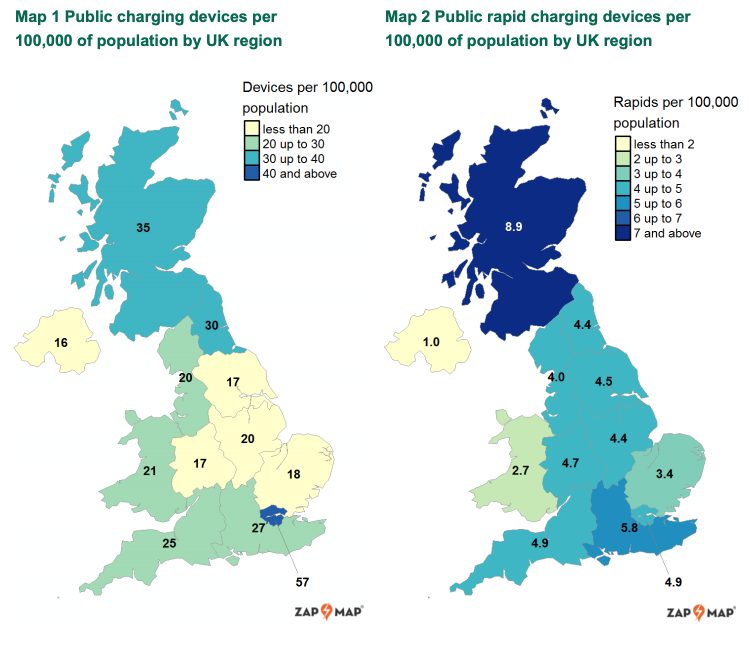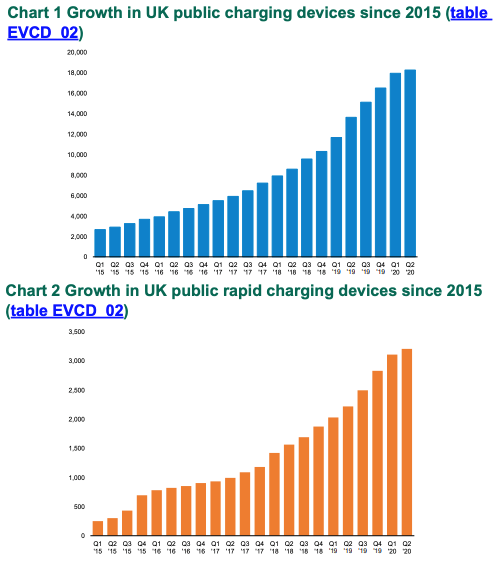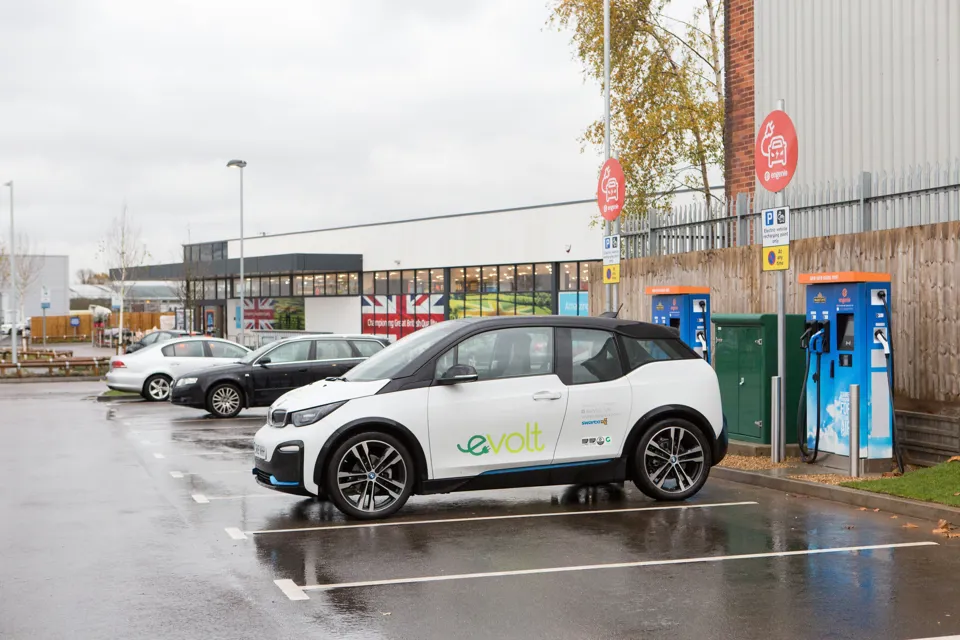Scotland has been highlighted as having the highest concentration of rapid charging points for plug-in vehicles, according to a new report from the Department for Transport (DfT).
Scotland has 8.9 rapid charging points per 100,000 of population, while London has just 4.9 by comparison.
The DfT has said the number of rapid charging points in the UK has increased by 363% over the last five years to 3,206 units.
The DfT’s quarterly EV charging device report shows that in Q2 2020, 318 more devices were available in total, up 2% on the previous quarter. Nearly a third (99) were rapid chargers.
Since 2015, the number of public charging devices has grown by nearly five times to July 2020, with an 11% increase in the year to date.
The data has been provided by electric vehicle (EV) and charging point platform Zap Map and broken down by local authority.

While London’s rapid charging infrastructure may be behind Scotland and the South East, it has by far the most public charging devices per 100,000 of population at 57.
This is followed by Scotland and then the North East at 35 and 30 respectively.
The DfT said there is an uneven geographical distribution of charging devices within the UK as some local authorities have bid for Government funding to boost infrastructure and others have not.
Most of the provision for the charging infrastructure has also been market led, with individual charging networks and other businesses (such as hotels) choosing where to install devices.
Despite Scotland having an above average number of charging devices per 100,000 of the population, the number of devices available actually decreased by 130 to 1,910 in Q2.
The DfT said this is an impact of coronavirus and the lockdown period where charging devices have been switched-of due to the sites being inaccessible.
In every other region, the number of charging devices has increased across the quarter to July, despite the coronavirus lockdown period.
London saw the largest increase with 82 more devices available during the second quarter of 2020.
Charging devices have largely been funded by private sector investment, however a number of the devices have been Government funded via a number of grant schemes operated by the Office for Low Emission Vehicles (OLEV).
OLEV also provides grant funding for private domestic charging and workplace charging devices, however these types of devices are not included within these statistics as they are not necessarily available to the general public.
The Government created a £400 million Charging Infrastructure Investment Fund (CIIF) in 2017 to help accelerate the roll-out of publicly-accessible charge points.
This makes £200m of public money – to be matched by private investment – available for all aspects of the charging infrastructure, including charge point equipment and grid enhancements.
RAC head of roads policy Nicholas Lyes said that despite the coronavirus, it’s clear that the installation of new electric vehicle chargers is continuing apace.
Lyes said: "With suggestions that we may have passed ‘peak petrol’, the sight of plenty of new chargers in prominent locations like supermarket car parks could be the nudge that some drivers need to opt for a plug-in car next time they change their vehicle, over one powered purely by petrol or diesel.
“While home charging is one of the most important elements of EV ownership, a comprehensive public charging network is also vital to giving drivers confidence they can keep topped up when away from home.
"For this reason, it’s vital new chargers are installed right across the UK in rural as well as urban locations."
Lyes also said it was important that rapid and ultra-rapid chargers start to make up a greater proportion of new public chargers as this will mean the ‘turnover’ of EVsusing them can be as high as possible, and can go some way towards making the process of charging a car as normal as filling one with fuel.





















Adam Rollins - 13/08/2020 12:27
A little be of arithmetic on these figures gives a very different picture. Using rough calculations based on the Wikipedia published populations and geographic areas of Greater London and Scotland to work out the physical distribution for rapid charge point gives an approximate distribution in Scotland of one rapid charge point for every 163 sq Km; in Greater London the same calculation shows one rapid charge point every 3.5 sq Km. Even with a huge margin for error, the Greater London infrastructure is massively denser than that of Scotland. With the need to ensure rapid charging even in rural areas, this suggests that Scotland is in-fact much further behind.